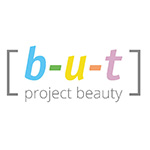“When you look nice, people can get very jealous and try and take that beauty away from you.” This was the answer of a 49 year old female respondent to the Project Beauty question: “What beauty can be dangerous?”. Her tone of voice suggests that beauty may have not always played an inspiring role in her life.
There are many sides to beauty, but the one most connected to female outer appearance is certainly an area with edges. Beauty, combined with the human shape, comes at a cost and does not always bring out goodness in people.
Besides Goodness, Truth is another special quality that is often referred to in connection with beauty. The poet John Keats felt the connection so strong that he believed them to be one and the same : ”Beauty is truth, truth beauty. That is all ye know on earth, and all you need to know.” Still, for others, the relationship between beauty and truth is less obvious: “If beauty is truth, why don’t women go to the library to have their hair done?” Testifies the American actress Lily Tomlin.
“If beauty is truth, why don’t women go to the library to have their hair done?”
Truth, beauty and goodness — an intriguing triangle. In philosophy they are called ‘the three transcendentals’. The ancient Greek philosophers believed them to be connected to three essential human abilities: to think, to wish and to feel, each fundamentally different from the other. In Project Beauty we explore the second path: the dreams and desires we have and how we deal with them. But, if we zoom in on this one topic, where does it leave the other two? One might ask, what happens with truth and goodness when we put beauty at the core of our universe?
Well, as science shows, it’s easier to be seduced by beauty than by goodness or by truth. At least some appearances of beauty just seem to have better connections in the lower part of our spine. How wishing and thinking influence each other is nicely illustrated by the title of the Dutch popular science book: ‘Don’t look at beautiful women (when you still need to think)’. An evidence-based advice, because for a very short time span, beauty is able to switch off parts of the brain.
On a much more practical level, research has shown that people who are deemed beautiful have actually a better chance of better, well-paid jobs. So much for the balance between beauty and justice.
In the eighties of the last century, in the Netherlands we had a popular quiz on tv: the Willem Ruis Show. People could win the objects they remembered passing on a conveyer belt. The presenter, Pierre van Ostade, started the finale with a torturing remark that over time acquired the status of a standard Dutch expression: ‘wat u niet heeft: …’ (‘What you don’t have: …). Maybe in real life we can have it all, beauty, goodness and truth, or, maybe, we simply can’t. But if the latter is the case, and we have to make a choice, choosing beauty seriously should make us stop for a moment and contemplate Van Ostade’s bleeding line.
– – – – – – – – – – – – – – – – – – – – – – –
Additional information
● The English version of the questionnaire that is at the heart of the project can be found here.
● If you want be stay updated about the project: follow us on Facebook.
● Project Beauty was made possible by the generous support of various companies (Dynata, Blauw Research and Datum Internacional ) and numerous wonderful individuals.
● The development and growth of Project Beauty is sustained with the ‘Seeking Beauty’ gifts: a series of fully personalized (e-)books, based on the core questionnaire of the project, and available for private and corporate gifts. Do you like our venture and are you interested in supporting us: feel free to try out these gifts or contact us!

Leave a Reply
You must be logged in to post a comment.